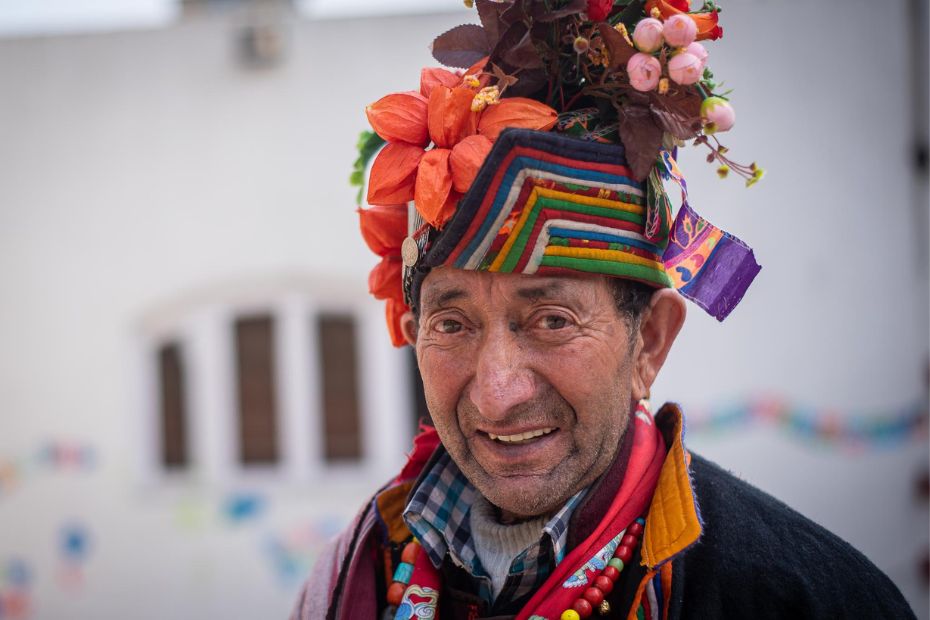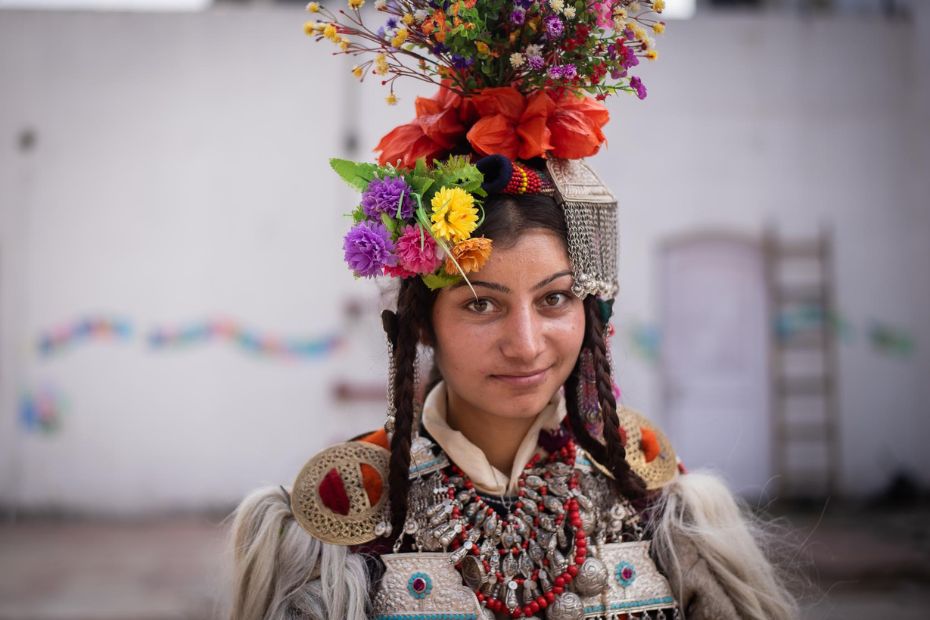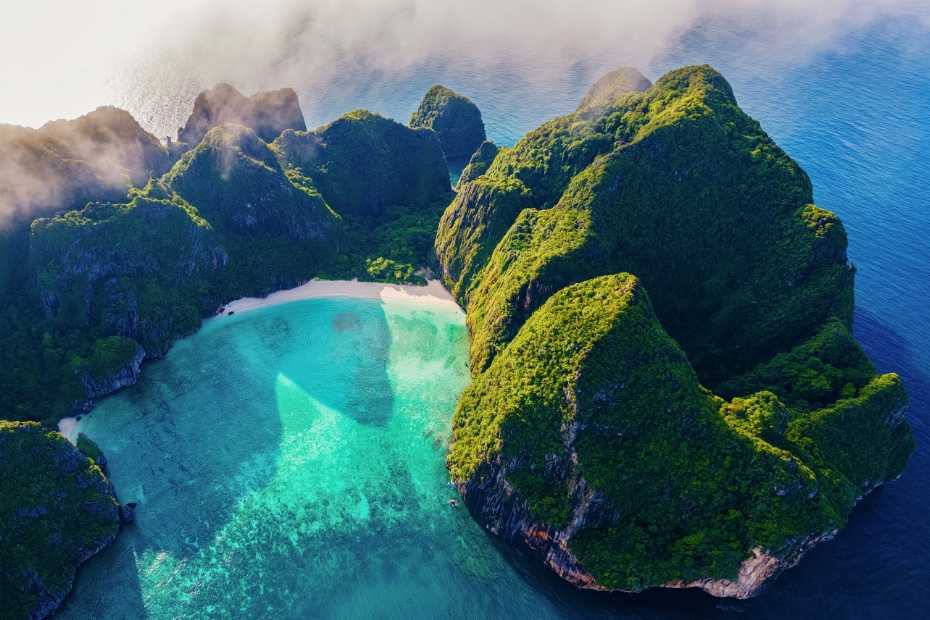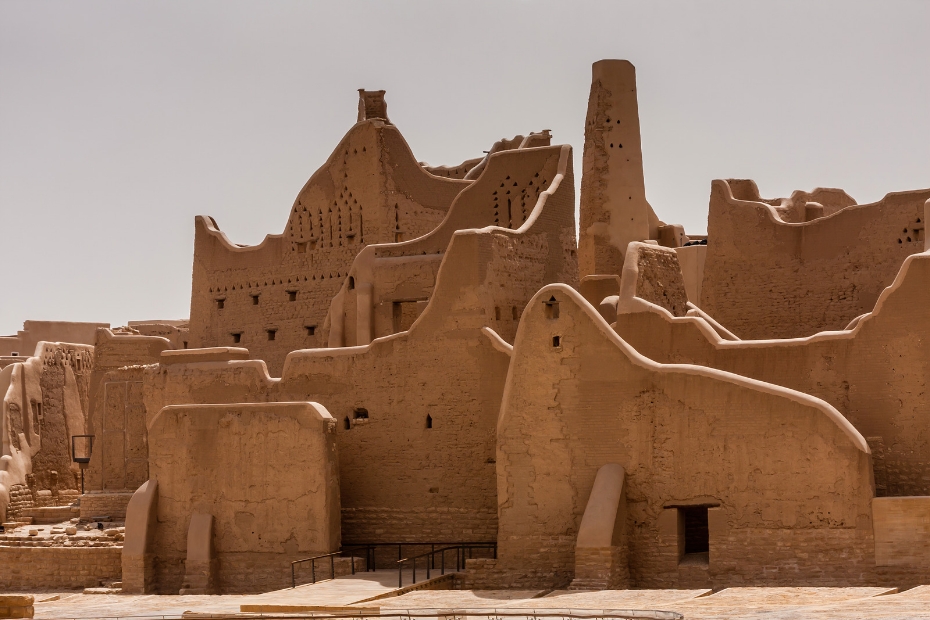Nestled among the towering peaks and rugged terrains of Ladakh, India, lies a community with a unique culture and an intriguing history. The Brokpa tribe, also known as the Dard Aryans, has preserved their ancient traditions and lifestyle for centuries, despite the ever-changing world around them. This post will explore the Brokpa tribe, their origins, and the fascinating Darchik village.
The Brokpa Tribe
The Brokpa tribe is an ethnic group predominantly residing in the remote villages of Ladakh, such as Darchik, Garkon, Dah, and Hanu. They claim to be the descendants of the Dard Aryans, which has sparked significant interest among historians and anthropologists. The tribe’s unique features, including their fair skin, light eyes, and prominent nose, have led many to believe that they are the last remnants of the ancient Aryan race.
The Brokpa people have a rich cultural heritage beyond their unique physical features and attire. Their language, Brokskat, is an Indo-Aryan dialect, further reinforcing their possible connection to the ancient Aryan race. The tribe is predominantly vegetarian, consuming barley, wheat, and locally grown fruits as their primary food sources. Goat milk and its by-products are also integral to their diet.
The Brokpa people’s religious beliefs blend elements of Buddhism, Hinduism, and animism, giving rise to a unique set of customs and rituals. Their festivals, such as the Bononah festival, are vibrant and filled with music, dance, and traditional performances.
The Brokpa Girl: A Symbol of Tradition
The Brokpa girls are renowned for their striking beauty and traditional attire. They wear a distinctive headgear called “perak,” made from layers of felt and adorned with semi-precious stones. The “perak” symbolizes their marital status and social standing within the community. They also wear colorful dresses and heavy silver jewelry, showcasing their vibrant culture.
These young women play a vital role in preserving the Brokpa way of life. They participate in cultural events, rituals, and festivals, ensuring the tribe’s ancient customs are passed down through generations.
Brokpa Women: Guardians of Culture and Tradition
Brokpa women are admired for their beauty and revered for their crucial role in preserving their tribe’s unique customs and heritage. As active participants in community life and cultural events, they embody the essence of the Brokpa way of life.
Appearance and Attire
The appearance of Brokpa women, with their fair skin, light eyes, and unique features, has often been the subject of fascination and intrigue. Their traditional attire is a reflection of their rich cultural heritage. Brokpa women wear vibrantly colored dresses made from locally sourced wool or cotton paired with embroidered waistcoats.
One of the most distinctive aspects of their attire is the “perak,” an elaborate headgear made of layers of felt, decorated with semi-precious stones, and adorned with turquoise, coral, and agate. The perak symbolizes a woman’s social standing and marital status within the community. Along with the perak, Brokpa women also wear heavy silver jewelry, such as necklaces, bracelets, and earrings, adding to their striking appearance.
Roles and Responsibilities
Brokpa women play an integral part in their community’s daily life, sharing responsibilities with the men in many aspects. They actively engage in agricultural tasks, such as planting, harvesting, and processing crops. They also care for livestock, milking goats and producing dairy products like cheese and butter.
In addition to their agricultural duties, Brokpa women were skilled artisans, creating intricate handicrafts, such as woven carpets and embroidered garments. They are also responsible for household chores, including cooking, cleaning, and childcare.
Cultural and Ritual Participation
Brokpa women’s participation in cultural events, rituals, and festivals is essential for preserving their tribe’s unique customs. They perform traditional dances and songs during these celebrations, often dressed in their finest attire. These performances showcase the tribe’s rich oral history, mythology, and folklore.
Women also participate in religious ceremonies, offering prayers and offerings to local deities and spirits. Brokpa women help maintain the community’s spiritual and social fabric through their involvement in these activities.
In summary, Brokpa women play a pivotal role in sustaining their tribe’s culture and traditions. Their active engagement in community life, from agricultural and domestic responsibilities to cultural and religious practices, ensures that the Brokpa way of life thrives for generations.

Brokpa Men: Upholding Traditions and Heritage
Brokpa men, just like women, play a vital role in preserving their tribe’s unique culture and traditions. They are primarily responsible for agricultural activities, herding livestock, and protecting their families and community. The men also trade with neighboring villages and regions, which has allowed the Brokpa people to maintain a degree of self-sufficiency despite their remote location.
Appearance and Attire
Brokpa men can be distinguished by their striking features, such as fair skin, light eyes, and prominent noses. These characteristics have fueled the belief that they are descendants of the ancient Aryan race. In terms of attire, the men wear traditional clothing made from locally sourced materials. They don a “goncha,” a loose woolen robe tied at the waist with a colorful sash. During colder months, they wear woolen jackets and caps to protect themselves from the harsh climate.
Roles and Responsibilities
Agriculture is the primary occupation for Brokpa men, as they cultivate barley, wheat, and various fruits to support their families. They also rear livestock, such as goats, sheep, and yaks, for milk, wool, and transportation. Herding and tending to their animals is a daily task for the men, ensuring the well-being of these valuable resources.
In addition to their agricultural duties, Brokpa men are skilled craftsmen, constructing the traditional stone and mud houses that provide shelter for their families. They also create various tools and implements used in farming and daily life.
Cultural and Ritual Participation
Brokpa men actively participate in the community’s cultural events, rituals, and festivals. They perform traditional dances and songs, often accompanied by musical instruments such as the “daman” (drum) and “surna” (wind instrument). These performances are essential in preserving the tribe’s unique customs and oral history.
During religious and social ceremonies, Brokpa men perform specific roles, such as leading prayers, making offerings, and organizing community gatherings. Their involvement in these events helps to maintain social cohesion and ensures the continuation of their ancient traditions.
Brokpa men play a critical role in sustaining their community’s way of life, from agricultural and herding activities to cultural and religious practices. They actively contribute to preserving their tribe’s unique heritage, ensuring that the Brokpa identity remains strong and vibrant for generations to come.
Dard Aryan: The Ancestral Link
“Dard Aryan” is often used to describe the Brokpa tribe, alluding to their supposed link with the ancient Aryan race. Some historians believe that the Brokpa people are the direct descendants of soldiers from Alexander the Great’s army, who settled in the region after his campaign in India. However, there is still much debate surrounding the origins of the Brokpa tribe, as conclusive evidence has yet to be found.
Ladakh: A Cultural Mosaic
Ladakh, a region in northern India, is a breathtaking landscape of snow-capped mountains, vast deserts, and turquoise lakes. This remote land is home to diverse ethnic groups, including the Brokpa tribe. The cultural richness of Ladakh is visible in its architecture, languages, and customs, with Buddhist monasteries and mosques coexisting in harmony.
Darchik Village: A Glimpse into the Past
One of the best places to experience the Brokpa way of life is the village of Darchik, located near the banks of the Indus River. This picturesque village is home to around 300 Brokpa families, who have maintained their traditional lifestyle for centuries. The houses in Darchik are built using stones and mud, which provide insulation from the harsh climate. The villagers rely on agriculture as their primary sustenance, primarily growing apricots, apples, and barley.
Dard Tribe History: A Tale of Resilience
The history of the Dard tribe is an inspiring tale of resilience and adaptation. Despite numerous invasions, migrations, and the challenges posed by the harsh environment, they have managed to preserve their unique culture and customs. The Brokpa people’s determination to protect their heritage is a testament to their strong sense of identity and pride in their ancestry.
Brokpa Food and Beverages: A Reflection of Simplicity and Adaptation
The Brokpa people’s diet is primarily vegetarian, shaped by the region’s climatic conditions and the availability of resources. The food and beverages consumed by the Brokpa tribe reflect their simple lifestyle, adaptability, and close connection with their environment.
Staple Foods
Barley and wheat are the staple grains in the Brokpa diet, cultivated in the harsh terrain of Ladakh. Barley flour, known as “tsampa,” makes various dishes, including traditional bread, pancakes, and porridge. Wheat is also used to prepare different types of bread and noodles.
Fruits and Vegetables
The Brokpa people grow and consume various fruits and vegetables, depending on the season. Apricots, apples, and walnuts are some of the fruits harvested in the region. Vegetables such as turnips, radishes, and potatoes are cultivated in the limited arable land.
Dairy Products
Goats play a significant role in the Brokpa diet, providing milk and dairy products. Goat milk makes yogurt, cheese, and butter essential to the tribe’s daily meals. These dairy products are nutritious and serve as an essential source of energy to withstand the region’s harsh weather conditions.
Beverages
Butter tea, or “gur-gur cha,” is a popular beverage among the Brokpa people. This unique tea is made from tea leaves, yak or goat butter, and salt. It is rich in calories, providing much-needed energy and warmth in the cold climate. Apart from butter tea, the Brokpa people consume “chang,” a local beer made from fermented barley or wheat.
Non-Vegetarian Dishes
Although the Brokpa tribe is predominantly vegetarian, they occasionally consume meat, primarily during festivals or special occasions. The meat typically comes from sheep, goats, or yak. However, it is essential to note that meat consumption is relatively low compared to other regions in Ladakh.
Their environment and available resources primarily shape the Brokpa people’s diet. Their food and beverages reflect a straightforward and adaptable lifestyle, which has allowed them to survive and thrive in the challenging terrain of Ladakh. While their diet may appear modest, it is a testament to their resilience and close connection with their surroundings.
Travel to the Brokpa Region
Reaching the Brokpa villages requires a bit of planning and preparation. The nearest airport is in Leh, the capital of Ladakh. From there, you can hire a taxi or join a guided tour to visit the Brokpa villages, approximately 150-160 kilometers away. The journey takes around 5-6 hours and passes through picturesque landscapes.
It is important to note that foreign tourists require an Inner Line Permit (ILP) to visit the Brokpa villages, which can be obtained online or through authorized agents in Leh. Indian tourists do not require an ILP but must carry valid identification.
Stay Options for Travelers in Ladakh and the Brokpa Region
While planning a visit to Ladakh and the Brokpa villages, it is essential to consider the available stay options. Depending on your preferences, budget, and the level of immersion you seek, you can choose from various accommodations in the region.
- Homestays: To experience the local culture and customs first-hand, you can opt for homestays in the Brokpa villages or nearby towns. Staying with a local family allows you to understand their way of life better, enjoy home-cooked meals, and interact with the host family. Homestays are also an excellent way to support the local economy. However, be prepared for modest facilities and limited amenities, as these are remote locations.
- Guesthouses: In nearby towns like Leh, Kargil, and Alchi, you can find a range of guesthouses offering comfortable accommodations with basic amenities. These guesthouses are typically family-owned and provide a more personalized experience than larger hotels. They may also be a convenient base for exploring the surrounding regions, including the Brokpa villages.
- Hotels: Leh, the capital of Ladakh, offers many hotels, from budget-friendly options to luxury accommodations. Here, you can find hotels with modern amenities, such as Wi-Fi, room service, and attached bathrooms. Some hotels also provide travel assistance and can help arrange guided tours to the Brokpa villages and other attractions in Ladakh.
- Tented Camps: For a more adventurous experience, you can opt for tented camps, available in various locations across Ladakh, including Nubra Valley and Pangong Tso. These camps typically provide basic accommodations with essential amenities, such as comfortable bedding, attached or shared bathrooms, and dining facilities. Staying in a tented camp allows you to enjoy the natural beauty of Ladakh up close.
When choosing your stay options in Ladakh, it is essential to consider factors such as accessibility, comfort, and the type of experience you seek. Remember that the region’s high altitude requires some acclimatization, so spending a few days in Leh or another lower-altitude location is advisable before venturing into the Brokpa villages or other high-altitude destinations. Moreover, always respect local customs and traditions while interacting with the local people and visiting their homes or villages.
Other Tourist Attractions in Ladakh
While visiting the Brokpa villages, be sure to explore other tourist attractions in Ladakh, such as:
- Pangong Tso: This stunning high-altitude lake is famous for its mesmerizing blue waters and serene atmosphere. It is also a popular location for bird-watching enthusiasts.
- Tso Moriri: Another breathtaking lake in Ladakh, Tso Moriri is surrounded by snow-capped mountains and is home to a diverse range of wildlife, including the rare black-necked crane.
- Nubra Valley: Known for its dunes, double-humped Bactrian camels, and the Diskit Monastery, the Nubra Valley offers an unforgettable travel experience.
- Hemis Monastery: This ancient Buddhist monastery, located about 45 kilometers from Leh, is a prime example of Ladakhi architecture and houses a rich collection of artifacts and murals.
- Khardung La Pass: At an altitude of 5,359 meters, Khardung La is considered one of the highest motorable passes in the world. The pass offers breathtaking views and is a popular destination for adventure enthusiasts.
- Zanskar Valley: Known for its rugged beauty, the Zanskar Valley is a haven for adventure seekers, offering opportunities for trekking, river rafting, and mountaineering.
When planning your trip to Ladakh and the Brokpa villages, account for the high altitude and take time to acclimate. Ladakh’s climate is unpredictable, so carry appropriate clothing and be prepared for sudden weather changes. Respecting local customs and the environment is crucial when visiting these remote, culturally rich areas.
Also Read: Tribal Tourism in India
Other Tribes of the Ladakh Region: Unveiling Rich Cultural Diversity
In the Ladakh region, there are several tribes with unique customs, traditions, and ways of life. Some tribes share similarities with the Brokpa people, while others have distinct characteristics. Here are a few notable tribes in the Ladakh region:
- Balti Tribe: The Balti people predominantly reside in Baltistan, now divided between India’s Ladakh and Pakistan’s Gilgit-Baltistan. They speak the Balti language, a Tibetan language closely related to Ladakhi and Tibetan. Their culture is a mix of Tibetan and Central Asian influences. The Balti people are primarily farmers and practice Tibetan Buddhism.
- Purigpa Tribe: The Purigpa people are found in the Kargil district of Ladakh and the adjoining regions. They speak the Purig language, which is a dialect of Ladakhi. Their culture has influences from both Tibetan Buddhism and Islam, reflecting the region’s diverse history. The Purigpa people are known for their expertise in agriculture and craftsmanship.
- Changpa Tribe: The Changpa people are a semi-nomadic tribe inhabiting the Changthang plateau in Ladakh. They mainly rear Pashmina goats, sheep, and yaks, depending on these animals for their livelihood. The Changpa tribe practice Tibetan Buddhism and follow a unique lifestyle that has adapted to the harsh conditions of the high-altitude plateau. They live in movable tents called “rebo” and are known for producing the world-famous Pashmina wool.
- Zanskaris Tribe: The Zanskaris people live in the remote Zanskar Valley, known for its rugged beauty and harsh winters. They practice Tibetan Buddhism and speak the Zanskari language, a dialect of Ladakhi. The Zanskaris are primarily farmers and herders, with a solid connection to their land and traditional way of life.
- Mon Tribe: The Mon people, also known as Monpas, inhabit the Tawang and West Kameng districts of Arunachal Pradesh, which borders Ladakh. They practice Tibetan Buddhism and follow a unique cultural heritage that blends Tibetan and indigenous influences. The Monpas are known for their wood carving, weaving, and carpet-making skills.
While each of these tribes has its distinct language, culture, and traditions, they all share the common thread of resilience and adaptability that allows them to thrive in the challenging landscapes of the Ladakh region and its surroundings.
In conclusion, the Ladakh region, with its captivating landscapes and rich cultural heritage, offers a unique opportunity for travelers to explore the fascinating world of indigenous tribes like the Brokpa and others. The tribes in this region, each with their distinct customs, traditions, and ways of life, showcase the incredible resilience and adaptability of the human spirit.
The Brokpa people are mainly known for their unique appearance, ancient Aryan lineage, and vibrant culture. Both men and women play crucial roles in preserving their tribe’s heritage, while their diet reflects the simplicity and resourcefulness that define their lifestyle. Exploring the Brokpa villages and other tribal areas in Ladakh allows travelers to witness the beauty of human diversity and the enduring connections between people and their environment.
When visiting these remote regions, it is vital to respect the local customs, traditions, and ecosystems to ensure that these communities continue to thrive for generations. By engaging with these indigenous cultures, travelers can foster a deeper appreciation for the vast tapestry of human experiences that make our world so beautifully diverse.



